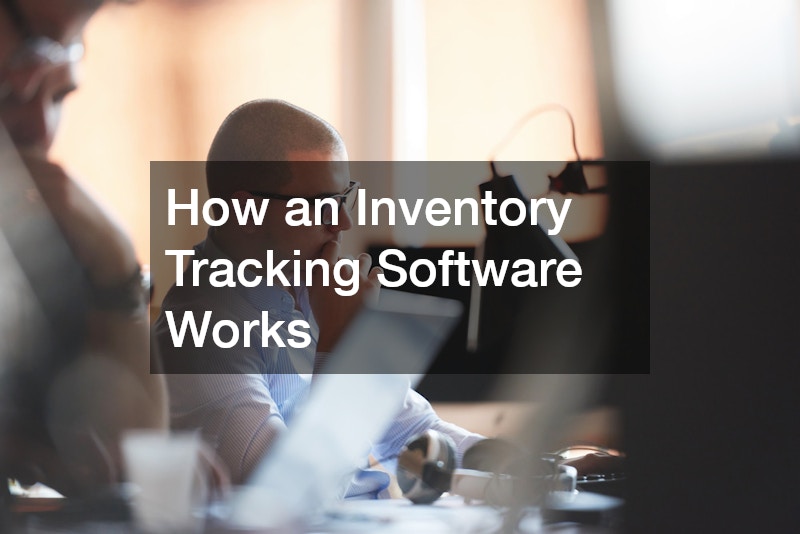
In today’s fast-paced business environment, managing inventory efficiently is crucial. Inventory tracking software plays a vital role in helping businesses streamline operations, minimize losses, and improve profitability. This article delves into how these sophisticated systems work, the technology behind them, and the benefits they offer.
What is Inventory Tracking Software?
Definition and Basic Functions
Inventory tracking software is a sophisticated system designed to automate and manage the tracking of inventory levels, orders, and sales. Its primary functions include providing real-time updates on inventory status, enabling businesses to have a clear picture of their stock at any given time.
These systems simplify the complex task of inventory management by organizing data systematically. By utilizing advanced databases, the software ensures that all information is accessible and up-to-date, which improves efficiency and data accuracy.
Additionally, inventory tracking software often includes features such as order management and vendor tracking. This holistic approach helps businesses reduce errors and streamline various inventory processes effectively.
Differentiating Types of Tracking Software
There are various types of inventory tracking systems available in the market, each catering to different business needs. Barcode-based systems are popular for their simplicity and cost-effectiveness.
RFID systems offer more advanced features with automatic updates and can track items without line of sight, unlike barcode systems. Businesses that need high speed and accuracy often prefer RFID due to its ability to handle large quantities effortlessly.
Cloud-based inventory management solutions have also become increasingly popular. They offer flexibility and scalability, allowing businesses to access their inventory data from anywhere, at any time, which is particularly beneficial for multi-location enterprises.
How Does Inventory Tracking Software Improve Efficiency?
Automation and Real-Time Updates
Automation is one of the key advantages of inventory tracking software, significantly reducing the need for manual tasks. Real-time updates ensure that inventory levels are constantly monitored and adjusted, allowing businesses to respond swiftly to any changes.
This automated approach minimizes human error and enhances decision-making by providing accurate data. With the real-time capability, companies can maintain optimal inventory levels, thus reducing costs and improving overall efficiency.
An example of these benefits can be seen in distribution centers where delays in receiving stock updates are drastically reduced. The ability to track inventory in real-time allows for better resource allocation and quicker reactions to market demands.
Integration with Other Systems
Inventory tracking software often integrates seamlessly with other business systems, such as ERP and CRM, enhancing operational efficiency. This integration allows for a centralized source of data, which improves coordination across departments.
Such integration reduces siloed data issues and ensures that all systems are operating with the most current information available. This, in turn, leads to improved service levels and customer satisfaction.
By connecting inventory management with financial systems, companies can gain a deeper insight into business performance, allowing for more informed strategic planning. The ability to integrate various systems creates a cohesive and efficient operational environment.
Can Inventory Tracking Software Save Costs?
Reducing Overstocks and Stockouts
Inventory tracking software prevents overstock situations by providing visibility into current stock levels and projected needs. This ensures that companies maintain just the right amount of inventory without tying up excess capital.
By minimizing the risk of stockouts, businesses can meet customer demand consistently, thereby maintaining high service levels and preventing lost sales. The truth is, effective inventory management can be a significant competitive advantage.
Ultimately, managing inventory efficiently with tracking software leads to decreased storage costs and reduced wastage. These savings contribute directly to a company’s bottom line, demonstrating the financial benefits of robust inventory management systems.
Labor and Time Cost Savings
Automation via inventory tracking software significantly reduces the need for manual counting and stock audits. This translates to fewer hours spent on inventory tasks, enabling staff to focus on more strategic activities.
As a result, businesses can operate with smaller teams, saving on labor costs. Moreover, employees can better manage their time, allowing for improved productivity and morale.
The efficiency gained from these systems not only cuts down on labor expenses but also reduces operational downtime. The overall impact is a smoother, more cost-effective business process where resources are optimized.
Is Inventory Tracking Software Secure?
Data Security Measures
Inventory tracking software includes various data security measures to protect sensitive business information. Encryption protocols and secure access controls are standard features that guard against unauthorized access and data breaches.
Maintaining data integrity is a top priority for these systems, ensuring that businesses can rely on the accuracy of their inventory records. Regular software updates and security patches help mitigate the risk of cyber threats.
User Access and Roles
Inventory tracking software allows for precise control over user access and roles, minimizing the potential for unauthorized actions. By setting user roles, businesses can ensure that only authorized personnel can perform specific tasks related to inventory management.
This level of access control helps maintain accountability and prevents potential misuse of the system. Moreover, audit trails and activity logs provide transparency into user actions, enhancing the overall security framework.
What Are the Key Features to Look for in Inventory Tracking Software?
Customization and Scalability
One of the key features to look for in inventory tracking software is the ability to customize it to fit specific business requirements. Customization enables companies to tailor the software’s functionalities to better align with their processes and goals.
Scalability is equally important, as it allows businesses to grow their inventory management system alongside their operations. A scalable system ensures that companies do not outgrow their software as they expand.
Reporting and Analytics Capabilities
Robust reporting and analytics capabilities are essential for effective inventory management. These features provide in-depth insights into inventory trends, helping businesses make data-driven decisions.
Detailed reports allow companies to analyze past performance and identify areas for improvement. Predictive analytics further enhances this capability by forecasting future inventory requirements and optimizing stock levels.
.



